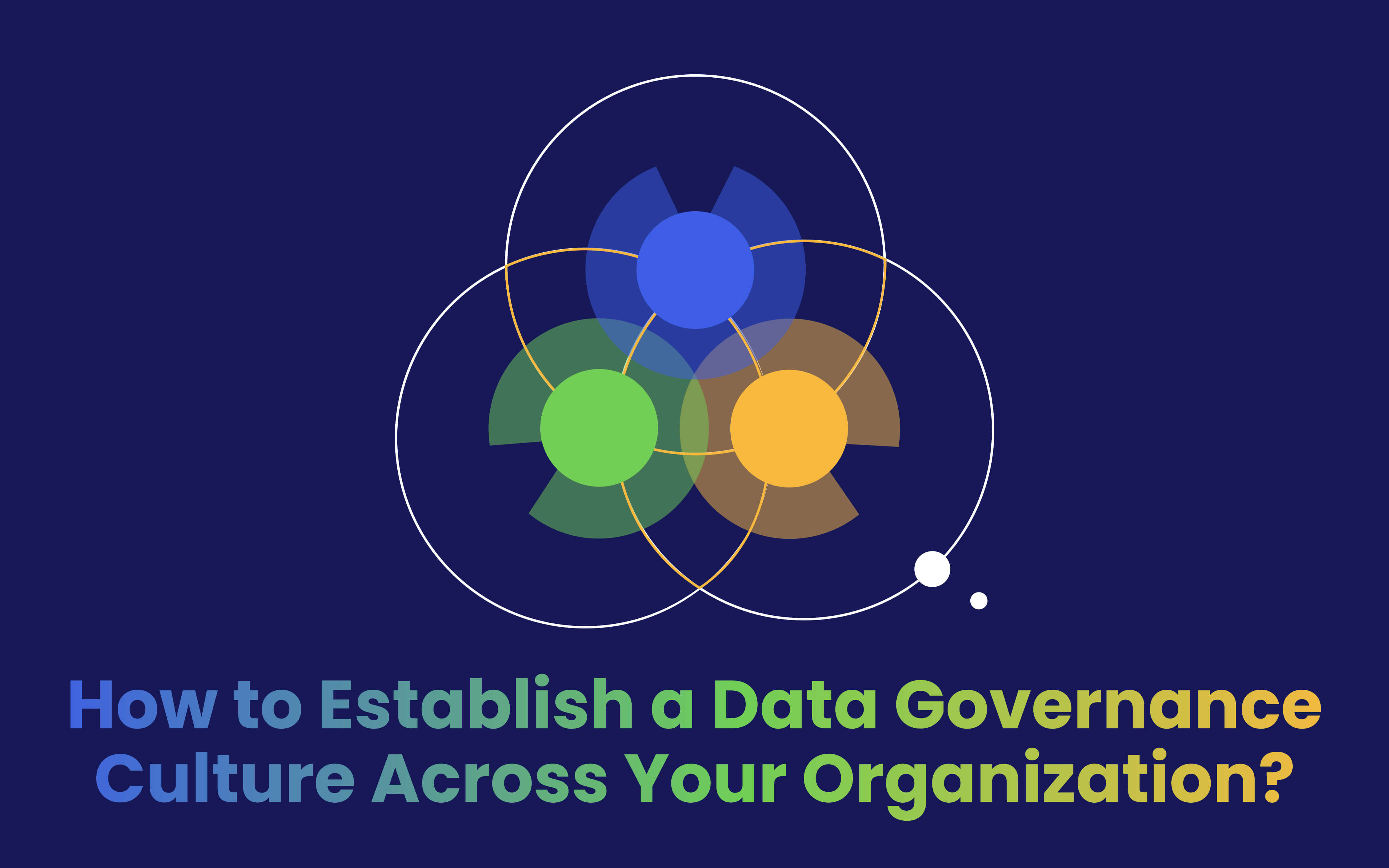Blogs
To know about all things Digitisation and Innovation read our blogs here.
DevOps
How to Establish a Data Governance Culture Across Your Organization?
SID Global Solutions
24 April 2023

Introduction
Data is considered as one of the most valuable assets of an organization. In today’s digital age, data is generated at an unprecedented pace, and its importance cannot be overstated. As a result, data governance has become a crucial aspect of business operations, and establishing a data governance culture is essential for organizations that want to harness the full potential of their data.
What is Data Governance?
Data governance refers to the management of data-related assets, including policies, procedures, and controls. It involves the creation and enforcement of policies and procedures that govern the collection, storage, use, and dissemination of data throughout an organization. Effective data governance ensures that data is accurate, complete, consistent, and secure, and that it is used in compliance with regulatory requirements and organizational policies.
Also Read: Developing a Winning Digital Transformation Strategy: Key Considerations
Why is Data Governance Important?
Data governance is essential for organizations for the following reasons:
- Compliance: With the increasing number of regulations, data governance helps organizations to comply with legal and regulatory requirements.
- Risk management: Data breaches can have serious consequences for organizations, including financial loss, reputational damage, and legal liability. Data governance helps organizations to manage risks associated with data breaches.
- Data quality: Effective data governance ensures that data is accurate, complete, and consistent, which is essential for decision-making.
- Cost savings: By ensuring that data is accurate and consistent, data governance can help organizations save costs associated with data errors and redundancies.
- Competitive advantage: Effective data governance can help organizations gain a competitive advantage by enabling them to make informed decisions based on accurate data.
Establishing a Data Governance Culture Across Your Organization
Establishing a data governance culture across an organization requires a structured approach that involves the following steps:
- Define the data governance framework: The first step in establishing a data governance culture is to define the data governance framework. This involves identifying the roles and responsibilities of data governance stakeholders, such as the data governance team, data owners, and data stewards. It also involves defining policies and procedures related to data management, including data quality, data security, and data privacy.
- Identify data governance champions: Identifying data governance champions is essential for establishing a data governance culture across an organization. Data governance champions are individuals who are passionate about data governance and can act as advocates for the data governance program. These individuals can help to promote the importance of data governance across the organization and encourage others to become involved.
- Build a data governance team: Building a data governance team is essential for implementing and maintaining an effective data governance program. The team should be composed of individuals with diverse backgrounds and expertise, including data management, legal, compliance, and IT. The team should be responsible for developing and implementing data governance policies and procedures, monitoring data quality, and ensuring compliance with legal and regulatory requirements.
- Develop a data governance training program: Training is essential for establishing a data governance culture across an organization. The training program should be designed to educate employees on the importance of data governance, their roles and responsibilities in the data governance program, and the policies and procedures related to data management. The training program should be customized for different employee groups, based on their roles and responsibilities.
- Implement data governance policies and procedures: Once the data governance framework has been defined, the data governance team should implement policies and procedures related to data management. These policies and procedures should be communicated to all employees, and compliance should be monitored regularly. The policies and procedures should cover all aspects of data management, including data quality, data security, and data privacy.
- Monitor data quality: Data quality is essential for effective data governance. The data governance team should establish metrics for data quality and monitor these metrics regularly. This will help to identify data quality issues and take corrective action.
- Establish a data governance review board: The data governance review board is responsible for overseeing the data governance program and ensuring that it is aligned with the organization’s goals and objectives. The review board should be composed of senior executives and other key stakeholders, and should meet regularly to review the progress of the data governance program, identify areas for improvement, and make recommendations for changes to the program.
- Ensure compliance with legal and regulatory requirements: Compliance with legal and regulatory requirements is essential for effective data governance. The data governance team should monitor changes in regulations and ensure that the data governance program is updated accordingly. This may involve developing new policies and procedures or updating existing ones to ensure compliance with legal and regulatory requirements.
- Encourage a culture of data ownership: Establishing a culture of data ownership is essential for effective data governance. Data owners should be identified for each data set, and they should be responsible for ensuring the accuracy and quality of the data. Data owners should also be responsible for determining who has access to the data and how it is used.
- Evaluate the effectiveness of the data governance program: Regular evaluation of the effectiveness of the data governance program is essential for continuous improvement. The data governance team should establish metrics for evaluating the effectiveness of the program, and these metrics should be reviewed regularly. Based on the results of the evaluation, changes may need to be made to the data governance program to ensure that it is effective.
Also Read: Why Setting Clear Digital Transformation Goals is Crucial for Business Success
Conclusion
Establishing a data governance culture across an organization requires a structured approach that involves defining the data governance framework, identifying data governance champions, building a data governance team, developing a data governance training program, implementing data governance policies and procedures, monitoring data quality, establishing a data governance review board, ensuring compliance with legal and regulatory requirements, encouraging a culture of data ownership, and evaluating the effectiveness of the data governance program.
By following these steps, organizations can establish a data governance culture that will enable them to make informed decisions based on accurate data, comply with legal and regulatory requirements, manage risks associated with data breaches, save costs associated with data errors and redundancies, and gain a competitive advantage.









